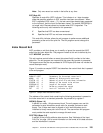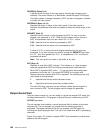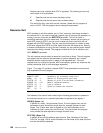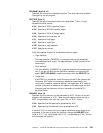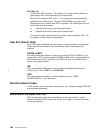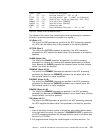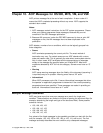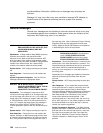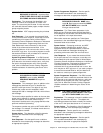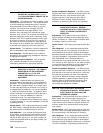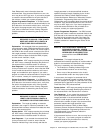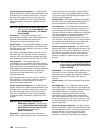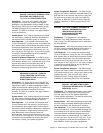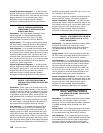
Chapter 10. ACIF Messages for OS/390, MVS, VM, and VSE
ACIF prints a message list at the end of each compilation. A return code of 0
means that ACIF completed processing without any errors. ACIF supports the
standard return codes.
Notes:
1. ACIF messages contain instructions for the PSF system programmer. Please
show your system programmer these messages, because they are not
contained in the PSF messages publication.
| 2. Because AIX users can invoke the PSF MSG command to view or print AIX
| messages on-line, the AIX messages have not been duplicated in this
| publication.
ACIF detects a number of error conditions, which can be logically grouped into
three categories:
Severe
ACIF terminates processing the current print file. The exact method of
termination may vary. For certain severe errors, ACIF abends with a return
code and reason code. This is generally the case when some system service
fails. In other cases, ACIF terminates with the appropriate error messages
written to the message file specified when you invoked ACIF. Most error
conditions detected by ACIF fall into this category. Severe errors have an “S”
suffix.
Warning
ACIF issues warning messages when the fidelity of the document (assuming it
is reprinted) may be in question. Warning errors have a “W” suffix.
Informational
When ACIF processes a print file, it issues informational messages that allow
the operator or application programmer to determine if the correct processing
parameters have been specified. These messages can assist in providing an
audit trail. Informational errors have an “I” suffix.
Multiple Message Scenarios
ACIF may issue more than one error message as a result of a single error
condition. These situations are limited to the area of parsing the structured field (for
example, determining the length and type of the structured field). Some possible
scenarios include:
105, 108, 109, 103
105, 108, 110, 103
106, 108, 109, 103
106, 108, 110, 103
Any subset of the listed messages is also possible, provided you start with the first
one (for example, 105, 108, 109 or 105, 108, or 105, 110, and so on). The first
message accurately describes the error condition; any subsequent messages
Copyright IBM Corp. 1993, 1999 133



